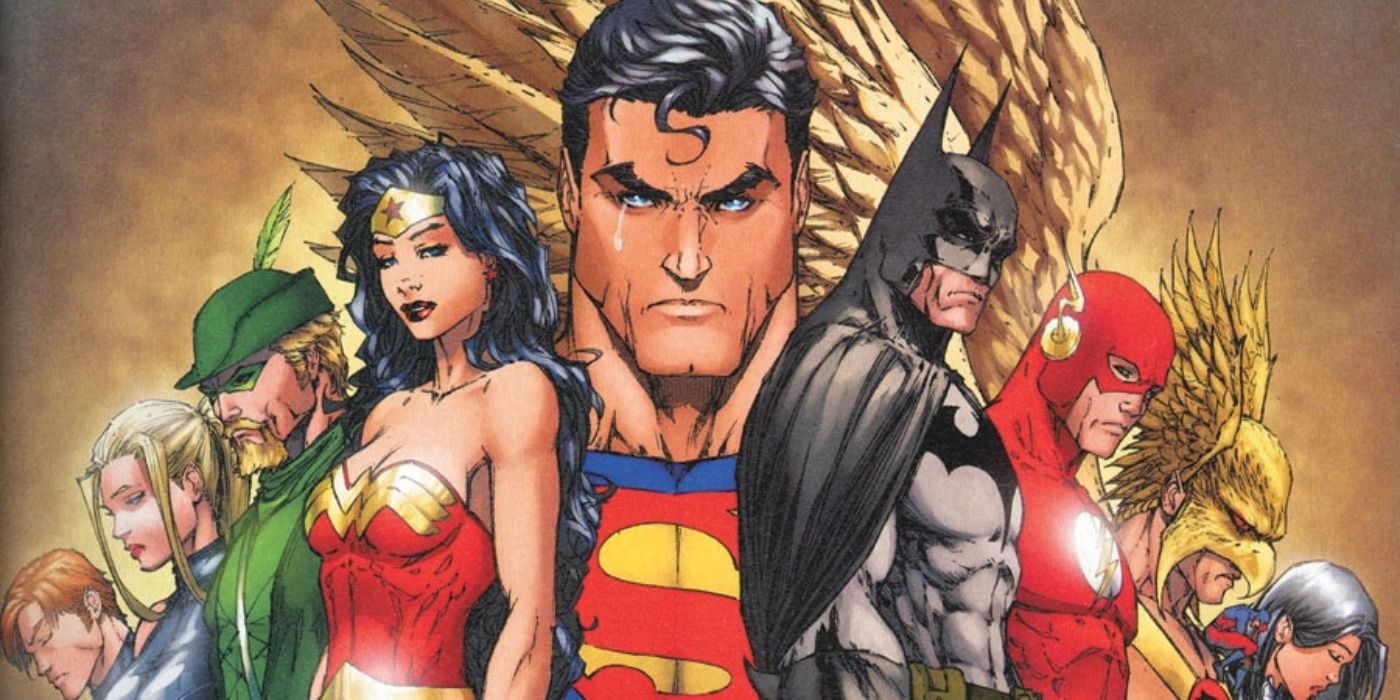
Warning: Spoilers for all issues of Identity Crisis!
In the world of DC Comics, the Justice League has had its fair share of controversial storylines, but 2004’s Identity Crisis was one of their most contentious. Dealing with death, abuse, broken relationships, and the idea of what superheroes are truly capable of when pushed into a corner, Identity Crisis is a story that’s still divisive amongst fans but is also a tale that took chances and liberties with iconic characters in a way that’s still debated to this day. Here’s what you need to know about this controversial storyline.
Released in seven issues from June to December of 2004, Identity Crisis, by Brad Meltzer and Rags Morales, was a controversial success almost from the start. Centering on the inexplicable death of one of their own — Elongated Man’s wife, Sue Dibny — Identity Crisis hit the ground running as the Justice League held nothing back in the search for her killer. Realizing that the nefarious Dr. Light might’ve had a hand in her demise, bits and pieces of a recent past where Sue was sexually assaulted by Light at the JLA’s orbiting watchtower are slowly revealed, as well as a secret about that night which immediately threatens the entire superhero community.
Dropping a bombshell twist that saw the then roster of the Justice League consisting of Black Canary, Green Arrow, Green Lantern Hal Jordan, Hawkman, Atom, Barry Allen’s Flash, Elongated Man, and Zatanna vote to mind-wipe and alter the personality of Dr. Light after his crime against Sue, Identity Crisis didn’t shy away from some dark material that superhero stories rarely engage in. Further revealed later on that Batman was also mind-wiped after objecting to the League’s treatment of Light, it’s insinuated that this process has happened far more than anyone cares to admit, forcing DC’s heroes to face their own demons as much as the ones they fight in the form of supervillains daily.

Representing the best of the DC Universe, the creators of this book purposely made the heroes of the Justice League more human and flawed than ever before as the relationships between characters took center stage more so than the typical superhero brawls usually found in event stories such as this. Killing off Flash villain Boomerang, former league member Firestorm, and even Robin’s father before the series ended, the reveal that one of their own — Atom’s wife, Jean Loring — was responsible for Sue’s death was yet another controversial element of a story that many didn’t know how to feel about at the time.
Described as a masterpiece, a travesty, and a story that pushes the idea of what superhero tales can be about, Identity Crisis’ ramifications were felt throughout DC Comics and into the lead-up to the continuity-altering event known as Infinite Crisis. Celebrated and lambasted ever since, Identity Crisis showed fans that heroes aren’t always as heroic as they might seem, even though their intentions might be good.
Full of twists and turns, as well as some questionable elements throughout, Identity Crisis, is an event series that might still deserve some of the criticisms it faced upon its initial release, but it’s a tale that still managed to stand the test of time as a unique and intriguing look at the harrowing inner trials and tribulations DC’s superheroes face on a constant basis. Identity Crisis is still a controversial story almost twenty years after its release, but upon reevaluation, it’s also one of the Justice League’s most essential.
from ScreenRant - Feed https://ift.tt/2WLZTQ0

0 Comments